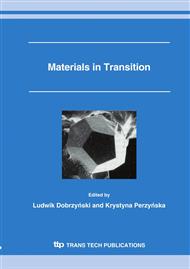p.81
p.89
p.93
p.101
p.109
p.117
p.123
p.133
p.141
Phonon Mode Conversion at Planar Interfaces in Crystalline Solids. Harmonic and Anharmonic Interface Potentials
Abstract:
A generalized model of a solid-solid interface is built. The model takes into account additional surface mass densities on both sides of the interface and an anisotropic and/or anharmonic coupling potential. The resonances due to the potential (up to three) manifest themselves by minima (zeros) of transmition and/or extrema in reflected and transmitted waves of different polarization depending on physical properties of the media and of the geometry.
Info:
Periodical:
Pages:
109-116
Citation:
Online since:
May 2006
Price:
Сopyright:
© 2006 Trans Tech Publications Ltd. All Rights Reserved
Share:
Citation:


